36 Amazing Japanese Snacks For Your Taste Adventure
Japanese snacks tantalize taste buds with their incredible creativity and unique flavor combinations.
Culinary innovations dance across diverse textures and unexpected ingredient profiles.
Colorful packaging often reflects intricate cultural aesthetics and playful design elements.
Small yet powerful treats represent more than simple food - they embody artistic expression and sensory delight.
Regional influences shape remarkable snack experiences, blending traditional techniques with modern gastronomy.
Compact morsels communicate complex cultural narratives through carefully crafted recipes and presentation styles.
Balanced between sweet, savory, and umami dimensions, these miniature culinary gems surprise and satisfy adventurous palates.
Curious food enthusiasts can uncover 36 remarkable Japanese snack sensations that promise delectable surprises:
Favorite Japanese Snacks for Every Craving
Japanese snack aisles are packed with inventive treats, from crispy rice crackers to sweet mochi. Each snack offers a playful burst of flavor and a window into local culture.
Hamamatsu Gyoza
Hamamatsu gyoza embodies a distinctive Japanese street food technique where pan-fried dumplings connect in a circular crispy network through hanetsuke method.
Regional specialty from Shizuoka Prefecture, these gyoza feature a signature style of arranging pork and vegetable-filled dumplings to maximize cooking efficiency.
Cabbage, onions, and seasoned ground pork create the traditional filling mixture.
Crispy interconnected bottoms distinguish these dumplings from standard gyoza preparations.
Generous bean sprout toppings complement the rich meat filling.
Restaurants and street vendors across Hamamatsu specialize in this unique dumpling style.
Each dumpling connects to its neighbors through a thin, golden-brown crisp layer.
Diners typically enjoy these gyoza as a savory snack or light meal.
Gyoza
Gyoza are crispy Japanese dumplings originating from Chinese jiaozi, featuring thin wheat flour wrappers filled with a savory mixture of minced meat and vegetables.
Japanese culinary traditions transformed these crescent-shaped dumplings by adapting regional ingredients and cooking techniques.
Pork or chicken forms the protein base, complemented by finely chopped cabbage, chives, and aromatic garlic and ginger.
Green onions add a fresh, sharp flavor to the filling.
Skilled cooks carefully wrap the mixture in delicate wheat dough, creating uniform crescents.
Gyoza are typically pan-fried until golden and crispy on one side, then steamed to ensure tender, juicy interiors.
Restaurants and home kitchens across Japan serve these popular dumplings as a beloved comfort food.
Restaurants often pair gyoza with a tangy soy-based dipping sauce, enhancing their complex flavor profile.
Okonomiyaki
Okonomiyaki are savory Japanese pancakes packed with umami flavors and customizable ingredients.
Street vendors and home cooks across Japan create these crispy, pan-fried discs with a versatile batter of eggs, flour, water, and grated yam.
Shredded cabbage provides the base, while optional additions like seafood, meat, or vegetables enhance the texture and taste.
Chefs fry the mixture until golden brown and crisp, then generously top the pancake with Japanese mayonnaise, tangy pickled ginger, and bonito fish flakes.
Worcestershire-style sauce adds a final layer of rich, complex flavor.
Regional variations exist throughout Japan, with Kansai-style being the most famous.
Diners often enjoy okonomiyaki as a casual, interactive meal prepared right at their table.
Ajitsuke Tamago
Ajitsuke tamago are marinated Japanese soft-boiled eggs famous for their silky, custardy yolks and rich umami flavor profile.
Ramen restaurants across Japan serve these eggs as a signature protein topping that transforms simple noodle dishes into gourmet experiences.
Carefully boiled eggs are quickly chilled to stop cooking and then soaked overnight in a savory marinade of mirin, soy sauce, and sometimes additional secret ingredients.
Precise timing ensures runny, golden-centered yolks that remain creamy and soft.
Home cooks and professional kitchens take great care in preparing these eggs to achieve perfect texture and taste.
Marinades can vary slightly between regions and individual recipes.
Salt and sugar balance the soy sauce's intensity for a complex flavor.
Ajitsuke tamago elevate any noodle or rice dish with their intense seasoning and attractive appearance.
Takoyaki
Takoyaki are iconic Japanese street snacks featuring crispy round balls filled with tender octopus pieces and cooked in specialized iron pans with small circular molds.
Originating in Osaka during the 1930s, these savory spheres blend wheat flour, eggs, dashi stock, and soy sauce into a creamy batter that transforms into golden-brown treats.
Skilled vendors carefully swirl the mixture in hot molds, creating perfectly shaped balls with a crunchy exterior and soft interior.
Traditional toppings include bonito fish flakes, sliced green onions, pickled ginger, and crispy tempura bits that add complex flavor layers.
Osaka street vendors pioneered this popular snack, which quickly spread across Japan as a beloved quick bite.
Each takoyaki ball provides a burst of umami flavor from the octopus and seasonings.
Tourists and locals alike enjoy these bite-sized treats as a quintessential street food experience.
Hiroshima-Style Okonomiyaki
Okonomiyaki are savory Japanese pancakes packed with flavor and regional creativity, originating from street food culture in western Japan.
Osaka and Hiroshima regions boast distinctive preparation styles that define this popular dish's unique character.
Hiroshima-style okonomiyaki features layered ingredients where a thin pancake base supports carefully assembled components like fried eggs, scallions, and sliced pork belly.
Noodles form a critical foundation, with yakisoba or udon serving as the bottom layer beneath the pancake stack.
Dried bonito flakes and special okonomiyaki sauce provide signature umami and sweet-savory notes.
Bean sprouts and cabbage contribute essential texture and freshness to the pancake.
Crispy edges and rich toppings make each serving a satisfying meal combining multiple cooking techniques.
Multiple ingredients transform a simple batter into a complex, delicious street food experience celebrating Japanese culinary innovation.
Korokke
Korokke are Japanese crispy deep-fried patties adapted from French croquettes, featuring mashed potatoes blended with meat, seafood, or vegetables.
Introduced to Japan in 1887, these golden-brown snacks quickly became a nationwide favorite for their affordable price and incredible taste.
Breadcrumb-coated and deep-fried to perfection, korokke offer a satisfying crunch with each bite.
Popular varieties include potato, meat, tuna, curry, cream, and okara styles that showcase the dish's versatility.
Home cooks and street vendors alike prepare these savory treats with simple ingredients and traditional techniques.
Supermarkets across Japan stock numerous korokke options, making them a convenient and delicious meal choice.
Crispy on the outside and soft inside, korokke represent a perfect fusion of French culinary technique and Japanese flavor preferences.
You can enjoy these snacks hot and fresh as a quick lunch, dinner side, or tasty appetizer.
Monjayaki
Monjayaki is a savory Japanese street food originating in Tokyo's Kanto region, featuring a runny wheat flour and dashi batter mixed with cabbage and various ingredients.
Developed during post-World War II food shortages, this unique pancake-like dish emerged as an affordable meal for struggling families.
Restaurants in Tsukishima, a Tokyo neighborhood, specialize in preparing monjayaki on flat griddles where diners cook the batter themselves.
Patrons gather around hot plates, stirring and scraping the wet mixture until it transforms into a crispy, golden-brown treat.
Street vendors initially sold this dish as a cheap, filling option during challenging economic times.
Japanese families quickly embraced monjayaki as a communal dining experience.
Restaurant-goers enjoy selecting their preferred mix-ins like seafood, meat, or vegetables.
Modern variations continue to reflect the dish's resourceful origins while celebrating Tokyo's innovative food culture.
Kare Pan
Kare pan embodies Japanese street food creativity by deep-frying curry-stuffed breaded dough into a crispy golden-brown snack sensation.
Street vendors and bakeries across Japan serve this popular okazu-pan variety with its signature crunchy exterior and spicy filling.
Curry-flavored foods remain immensely popular in Japanese cuisine, making kare pan a beloved quick bite.
Breaded dough gets carefully wrapped around thick, rich curry paste before being submerged in hot oil.
Each bite releases a burst of savory curry flavor that delights snack enthusiasts.
Japanese convenience stores stock these handheld treats as quick meal options.
Kare pan originated as a clever street food innovation combining western breading techniques with traditional Japanese curry.
Bakeries continue perfecting this crispy, spicy snack that satisfies hunger with every crunchy mouthful.
Ikayaki
Ikayaki are succulent Japanese street food delicacies featuring grilled squid that captivate seafood lovers with their quick preparation and tender texture.
Squid varieties range from small to large, typically served as skewered whole pieces or chopped rings with optional tentacles.
Marinades enhance the dish's flavor profile, commonly using traditional Japanese ingredients like rice wine, miso paste, ginger, and soy sauce.
Chefs grill the squid swiftly to maintain its plump and juicy characteristics.
Teriyaki or soy sauce often accompanies the grilled seafood.
Street vendors across Japan prepare ikayaki as a popular quick snack.
Diners enjoy the smoky, fresh taste that highlights the squid's natural sweetness.
Serving the dish immediately after grilling ensures maximum flavor and optimal texture.
Daigaku Imo
Daigaku imo are Japanese sweet-glazed deep-fried potato chunks that transform humble potatoes into a crispy, caramelized street snack beloved by students since the early 1900s.
University students first popularized these golden-brown treats as an affordable and satisfying bite between classes.
Each potato chunk boasts a glossy caramel exterior that cracks delicately when bitten, revealing a soft, tender inside.
Sesame seeds scattered on top add a subtle nutty crunch to the sweet-savory profile.
Japanese street vendors and small shops continue to prepare these nostalgic potatoes using traditional techniques.
Street markets and student fairs remain popular spots for enjoying this simple yet irresistible snack.
Minimal ingredients and quick preparation make daigaku imo an accessible comfort food.
Imagawayaki
Imagawayaki are classic Japanese street snacks featuring circular pastries with crispy exteriors and soft interiors traditionally filled with sweet red bean paste.
Japanese vendors prepare these round cakes by pouring thick egg-based batter into specialized round molds that create their signature shape.
Regional variations include sweet fillings like custard, chocolate, or cream alongside classic anko (red bean) mixture.
Modern versions sometimes incorporate savory fillings such as cheese or meat for diverse flavor experiences.
Street food markets and festivals frequently showcase these beloved treats across Japan.
Compact and portable, imagawayaki serve as quick handheld snacks enjoyed by people of all ages.
Small circular griddles help create their distinctive round appearance and golden-brown crisp exterior.
Osaka-Style Okonomiyaki
Okonomiyaki are savory Japanese pancakes packed with flavor and regional diversity, featuring a crispy exterior and soft interior made from a versatile batter of flour, eggs, shredded cabbage, and optional ingredients like pork or seafood.
Originating in Osaka and Hiroshima, these pan-fried delights showcase two distinct preparation styles with the Osaka method mixing all ingredients together before cooking.
Hiroshima-style okonomiyaki layers ingredients instead of mixing them, creating a unique textural experience.
Cooks typically top the pancake with Japanese mayonnaise, sweet worcestershire-style sauce, and bonito flakes for added umami.
Restaurants and street vendors across Japan specialize in this customizable dish that lets diners choose their preferred protein and toppings.
Restaurants often prepare okonomiyaki directly on a griddle at the customer's table for an interactive dining experience.
Each region adds its own twist, making okonomiyaki a flexible and beloved street food.
Himono
Himono are traditional Japanese dried fish delicacies crafted through a meticulous preservation technique that transforms small fish like mackerel and sardines into flavor-packed seafood.
Fishermen originally developed this method to extend food storage during times without refrigeration.
Salt initially served as a crucial preservation agent, though modern versions often use it for seasoning enhancement.
Fishers carefully butterfly and clean selected fish before exposing them to sunlight or refrigeration for thorough drying.
Sun-drying naturally concentrates fish flavors and creates a unique texture different from fresh fish preparations.
Grilling becomes a popular final cooking method, where the dried fish gets brushed with savory soy-based sauces.
Restaurant menus and home kitchens across Japan frequently feature himono as a protein-rich dish.
Regional variations showcase diverse fish selections and marinades that reflect local maritime traditions.
Yaki Imo
Yaki imo are sweet roasted Japanese potatoes celebrated as a beloved winter street snack that transforms simple tubers into caramelized comfort food.
Japanese vendors traditionally roast these large dark purple potatoes with bright yellow centers on hot black stones using specialized mobile stoves and grilling equipment.
Street sellers originally used hand-pulled trolleys but now operate modern trucks designed for potato preparation.
Vendors carefully select specific potato varieties known for their natural sweetness and creamy texture.
Winter markets and street corners become gathering spots where people enjoy these warm, smoky-flavored potatoes straight from the grill.
Each potato is slowly roasted to develop a crispy exterior and soft, sugary interior.
Street food culture keeps this simple yet delicious tradition alive across Japan.
Seasonal enjoyment makes yaki imo a cherished cold-weather treat that connects generations through its straightforward, satisfying preparation.
Aburaage
Aburaage are deep-fried tofu pouches originating in Japan with a unique golden-brown exterior and hollow center perfect for stuffing with savory ingredients.
Japanese home cooks slice these crispy pockets and fill them with rice, vegetables, or meat to create popular dishes like inari sushi.
Rich in protein and versatile, aburaage absorbs flavors quickly and transforms into delicious meals across different cuisines.
Soy milk and soybeans form the base of these tofu pouches during preparation.
Each piece gets fried twice to create a light, crispy shell with an airy interior.
Restaurants and street vendors frequently use aburaage in traditional recipes like kitsune udon and inari sushi.
Nutritious and easy to prepare, these tofu pouches offer a quick protein option for meals.
Vegetarians and meat-eaters enjoy aburaage for its adaptable texture and ability to complement multiple flavor profiles.
Kakiage
Kakiage is a Japanese deep-fried tempura featuring a delicate mixture of thinly sliced vegetables and occasional seafood pieces bound together with a light, crispy batter.
Small strips of carrots, onions, lotus roots, and sweet potatoes create a colorful medley that transforms into a golden-brown crisp when submerged in hot oil.
Flour, water, and sometimes egg yolks form the lightweight coating that gives kakiage its signature crunch.
Restaurants and street vendors across Japan serve this popular snack as a standalone dish or alongside rice and other main courses.
Home cooks enjoy making kakiage because it offers a quick and versatile way to use leftover vegetables.
Traditional preparation involves carefully cutting ingredients into uniform thin strips and gently frying them to achieve maximum crispiness.
Japanese culinary traditions emphasize the balance of texture and flavor in this simple yet satisfying street food.
Kakiage represents a perfect example of Japan's talent for creating complex flavors from minimal ingredients.
Senbei
Senbei are traditional Japanese rice crackers featuring crispy textures and diverse flavor profiles that originated during Japan's Tang Dynasty in 737 AD.
Japanese artisans craft these thin, crunchy snacks using glutinous rice, wheat flour, or potatoes through precise baking or frying techniques.
Soy sauce quickly became the first popular seasoning, sparking widespread cracker production across Japanese regions.
Regional variations now include sweet and savory styles with unique ingredients and regional influences.
Each senbei reflects cultural culinary traditions through its distinct preparation method and flavor combinations.
Handmade versions showcase intricate craftsmanship and generations of snack-making expertise.
Street vendors and specialty shops continue producing these iconic crackers using time-honored techniques.
Modern manufacturers experiment with innovative flavors while maintaining traditional production standards.
Dorayaki
Dorayaki are iconic Japanese pancake sandwiches beloved for their sweet azuki bean paste filling nestled between two honey-flavored fluffy pancakes.
Originating in early 1900s Tokyo, these treats resemble traditional gongs and quickly became a cultural sensation.
Usagiya, a famous confectionery, pioneered the modern dorayaki style with its unique preparation method.
Manga fans recognize dorayaki as the favorite snack of Doraemon, the famous blue robot-cat character.
Honey and mirin add distinctive sweetness to the pancake batter, creating a complex flavor profile.
Traditional preparation involves carefully crafting thin, soft pancakes with a slightly caramelized exterior.
Popular during Japan's nostalgic Showa Era, dorayaki continue to delight generations of sweet lovers.
Modern variations include different fillings like custard or chocolate, expanding its appeal beyond classic red bean paste.
Chikuwa
Chikuwa are Japanese fish tubes crafted from ground seafood mixed with salt, sugar, egg whites, and starch, molded around a bamboo stick and grilled or steamed until golden.
Marine proteins like shark, pollock, or flying fish form its core ingredient base.
Traditional preparation involves removing the stick after cooking, creating a unique hollow cylindrical shape.
Japanese households often enjoy chikuwa as a standalone snack, typically dipped in savory soy sauce.
Home cooks frequently slice these fish tubes into dishes like stews and curries for added texture and protein.
Regional variations exist across different Japanese coastal areas.
Nutritional value stems from lean marine proteins and minimal processing.
Chikuwa's name directly translates to "bamboo tube" in Japanese, reflecting its distinctive manufacturing method.
Mame Daifuku
Mame daifuku celebrates traditional Japanese confectionery through soft mochi wrapped around sweet fillings originating in the Edo period.
Rice flour creates a pillowy exterior that gently encloses rich azuki bean paste or whole soybeans.
Japanese tea ceremonies frequently feature this delicate treat as a symbolic accompaniment.
Small and round, mame daifuku offers a subtle balance between chewy texture and smooth interior.
Seasonal variations highlight regional ingredients and cultural preferences.
Handcrafted preparation methods ensure each piece maintains authentic culinary heritage.
Sophisticated yet simple, the sweet represents a refined connection to Japanese dessert traditions.
Regional differences in preparation showcase local ingredient availability and cultural nuances.
Yakisoba Pan
Yakisoba pan delivers a unique street food experience blending Japanese stir-fried noodles with a soft bread roll.
Street vendors in Japan popularized this quick meal featuring wheat noodles tossed with cabbage, onions, and carrots.
Workers and students frequently choose this portable lunch for its convenient size and satisfying flavor.
Worcestershire-style sauce coats the noodles, adding a tangy sweetness to the dish.
Protein options like pork or chicken enhance the noodle mixture's heartiness.
Mustard or mayonnaise sometimes accompany the sandwich for extra zest.
Japanese fast-food culture embraces this simple yet flavorful creation.
Vendors typically prepare the dish quickly, making it a perfect grab-and-go meal for busy urban dwellers.
Nerikiri
Nerikiri are exquisite Japanese confections crafted to mirror seasonal beauty through intricate artistic designs.
Skilled wagashi makers transform sweet white bean paste and rice flour into delicate sculptures representing nature's changing landscapes.
Sakura nerikiri, shaped like cherry blossoms, emerge as spring's most beloved version of this traditional sweet.
Artisans carefully mold the soft, pliable dough into precise shapes including flowers, birds, and landscape scenes.
These edible art pieces celebrate Japan's deep cultural connection to seasonal transitions and aesthetic elegance.
Colors and shapes change throughout the year, ensuring each nerikiri tells a unique visual story.
Soft textures and subtle sweetness make these treats perfect companions to green tea.
Japanese tea ceremonies often feature nerikiri as a symbolic and beautiful dessert element.
Manju
Manju are traditional Japanese steamed pastries that showcase a delicate balance between a soft, chewy outer shell and a rich, flavorful filling.
Chinese in origin, these versatile treats transformed from meat-filled dumplings to vegetarian delicacies when Buddhist monks reimagined the recipe with sweet red bean paste.
Wheat flour typically forms the outer layer, though rice flour alternatives exist, and bakers often add vibrant colors to enhance visual appeal.
Red and white manju hold special cultural significance, serving as wedding gifts and funeral offerings while simultaneously functioning as everyday desserts.
Regional variations include different flour types and fillings, ranging from sweet bean pastes to occasional savory versions.
Japanese families cherish these compact, hand-sized treats as symbols of hospitality and tradition.
Seasonal festivals and celebrations frequently feature manju as a beloved snack.
Generations have embraced these compact pastries as a meaningful culinary connection to their cultural heritage.
Karinto
Karinto are classic Japanese deep-fried sugar-coated sticks beloved for their crispy exterior and sweet caramelized coating.
Street vendors first sold these golden-brown snacks in Japan during the 1830s as quick, affordable treats.
Yeasted wheat flour dough forms the base of these crunchy morsels before deep frying transforms them into signature crisp sticks.
Traditional preparations involve coating the fried dough with brown sugar, creating a rich caramelized layer that adds intense sweetness.
Modern versions experiment with alternative sugars like white sugar and add textural elements such as crushed peanuts or sesame seeds.
Regional Japanese bakeries and street food markets continue producing karinto using time-honored techniques.
Karinto remains a nostalgic comfort food that connects people to Japan's rich street food culture.
Satsuma-Age
Satsuma-age are savory deep-fried fish cakes originating from southern Japan that pack robust seafood flavor into a crispy exterior.
Fishermen in the Kagoshima prefecture first developed these protein-rich snacks using local catch like cod, pollock, sardines, mackerel, and tuna.
Regional variations include adding squid, octopus, or shrimp to create diverse texture and taste profiles.
Coastal communities traditionally prepare these golden-brown patties as quick street food or izakaya appetizers.
Street vendors and home cooks often serve them hot and fresh, accompanied by grated daikon or dipping sauces.
Modern Japanese restaurants continue to feature satsuma-age as a popular casual seafood dish.
These compact fish cakes provide a convenient protein source with deep umami undertones.
Karukan
Karukan are traditional Japanese sweets from Kagoshima Prefecture boasting a uniquely light and fluffy texture crafted from rice flour, grated Japanese yam, water, and sugar.
Regional bakers carefully knead these ingredients into a smooth mixture before steaming the batter to create soft, spongy bread-like confections.
Japanese families often enjoy karukan during tea time or as a casual dessert.
Steaming transforms the simple ingredients into a delicate treat with a mild, subtly sweet flavor.
Mountain yams provide essential moisture and softness to the cake's interior.
Rice flour ensures a gentle, airy consistency that melts in you mouth.
Sugar adds just enough sweetness to balance the subtle yam notes.
Kagoshima's culinary heritage shines through this simple yet elegant sweet that reflects local agricultural traditions.
Tsukemono
Tsukemono are traditional Japanese pickles crafted from diverse vegetables and fruits, serving as essential accompaniments in washoku cuisine.
Small slices of bright vegetables like daikon radish, cucumbers, aubergine, and turnips transform simple meals with intense flavor profiles and crisp textures.
Preservation techniques range from salt and vinegar to complex rice bran fermentation methods, creating unique regional varieties.
Japanese households and restaurants use these pickles as side dishes, snacks, and garnishes across multiple dining contexts.
Fukujinzuke, a popular seven-pickle relish cured in soy sauce, adds extra complexity to Japanese curry dishes.
Nukazuke, perhaps the most intricate pickle style, involves fermenting vegetables in roasted rice bran mixed with salt and seaweed.
Home cooks and professional kitchens both embrace tsukemono for their ability to enhance meal balance and provide contrasting flavors.
Regional differences in preparation ensure each pickle batch carries distinct local characteristics.
Tamago Boro
Tamago boro are delicate Japanese egg cookies known for their melt-in-your-mouth texture and subtle sweetness.
Crafted from egg yolks, sugar, cornstarch, and milk, these tiny spherical treats originated in Japanese culinary traditions.
Bakers carefully mix ingredients to create a smooth dough before rolling it into small, uniform balls.
Each cookie is gently baked to maintain a pale color and preserve its tender consistency.
Minimal browning ensures the cookies retain their signature soft, powdery quality.
Japanese families often enjoy tamago boro as a light afternoon snack or with green tea.
Traditional recipes pass through generations, maintaining the cookie's classic preparation method.
Children particularly love these gentle, crumbly cookies for their mild flavor and unique texture.
Tofu Misozuke
Tofu misozuke represents a fermented Japanese delicacy transforming ordinary tofu into an intensely flavorful spread through careful miso aging.
Originating in Fukuoka, this unique preparation involves submerging tofu in miso paste for two months to two years, creating a creamy cheese-like texture with deep umami complexity.
Vegan cheese lovers prize its rich, savory profile that develops during fermentation.
Miso's enzymes break down tofu's proteins, generating an incredibly smooth consistency.
Japanese culinary traditions elevate this simple ingredient through patient preservation techniques.
Western food enthusiasts increasingly discover this traditional method of transforming basic ingredients.
Restaurants and home cooks now experiment with its versatile flavor potential.
Small artisan producers continue crafting this exceptional fermented delicacy with meticulous attention to aging processes.
Kenpi
Kenpi are crispy, caramelized sweet potato strips that exemplify Japanese street snack innovation.
Sweet potato strips get deep-fried and coated in sugary syrup, creating a crunchy exterior with a golden-brown finish.
Originating in Kochi Prefecture, these addictive treats resemble french fries but deliver a unique sweet-savory flavor profile.
Locals and tourists enjoy kenpi as a quick street snack or casual munching option.
Traditional preparation involves carefully selecting and slicing Japanese sweet potatoes.
Ingredients include sweet potatoes, sugar, and vegetable oil for frying.
Regional recipes might include slight variations in sugar coating techniques.
Ganmodoki
Ganmodoki are traditional Japanese tofu fritters bursting with flavor and texture, crafted by blending mashed tofu with chopped vegetables like carrots, burdock root, and green onions.
Street vendors and home cooks carefully mix the ingredients into small patties that get deep-fried to a crispy golden brown.
Japanese Buddhist monks originally developed these protein-rich fritters as a meat substitute during vegetarian meals.
Restaurants across Japan serve ganmodoki as a popular side dish or appetizer, often accompanied by dipping sauces like soy or ponzu.
Protein-packed and versatile, these fritters work well in soups, stews, or as standalone snacks.
Tofu provides a soft interior while the exterior remains crunchy and light.
Street food culture and Buddhist culinary traditions have helped preserve this classic Japanese recipe through generations.
Hida Beef Croquette
Hida beef croquettes are crispy golden Japanese deep-fried delicacies bursting with premium regional beef from Gifu prefecture.
Local kitchens craft these savory treats by combining tender Hida beef pieces with creamy mashed potatoes and select vegetables.
Carefully mixed ingredients are shaped into compact patties and coated with light breadcrumbs.
Chefs deep-fry the croquettes until they reach a perfect golden-brown exterior with a soft, rich interior.
Each bite delivers a satisfying crunch that reveals succulent beef and smooth potato textures.
Regional cooking traditions elevate this simple dish into a celebrated street food and home-style comfort meal.
Restaurants and food stalls across Gifu prefecture showcase these iconic croquettes as a signature regional specialty.
Travelers and locals alike enjoy these hearty snacks as a quick and delicious bite.
Inago No Tsukudani
Inago no tsukudani are savory preserved grasshoppers marinated in a sweet and salty sauce that transform these insects into a protein-rich delicacy from Japanese mountain regions.
Japanese cuisine embraces these insects as a sustainable protein source with deep regional roots in Nagano and Fukushima prefectures.
Grasshoppers are carefully cleaned and boiled before being simmered in a mixture of soy sauce, mirin, and sugar until they become glossy and flavorful.
Traditional preparation methods ensure the grasshoppers maintain a crunchy texture while absorbing the rich umami seasonings.
Rural communities have long considered these insects an important nutritional supplement during lean agricultural seasons.
Foraging and preparing inago requires skill and patience from local residents who understand sustainable food practices.
Mountain dwellers developed this unique preservation technique to maximize protein intake from available resources.
Jibachi Senbei
Jibachi senbei are spicy Japanese rice crackers packed with protein-rich digger wasps sourced from the mountains near Omachi city.
Elderly wasp hunters in their 80s catch these insects using traditional methods and carefully prepare them for consumption.
Members of the Omachi Jibachi Aikokai fan club transform the wasps into a unique regional snack by boiling and drying them.
Small digger wasps get sprinkled over rice cracker batter before being stamped into shape with hot iron cutters.
These crispy crackers offer an unusual protein source for adventurous eaters seeking authentic regional cuisine.
Mountain-dwelling seniors developed this innovative snack as a creative way to use local insect populations.
Wasps provide a surprising crunch and nutritional boost to the traditional rice cracker base.
Japanese cuisine continues to surprise global food enthusiasts with unexpected ingredient combinations.
Denpun Dango
Denpun dango are soft potato flour dumplings from Hokkaido that emerged during World War II's challenging times as a resourceful winter comfort food.
Cold Hokkaido winters inspired these hearty snacks made with potato flour and boiled sweet beans.
Locals developed this unique dango variety when traditional ingredients were scarce, transforming simple potato flour into a satisfying treat.
Traditional preparation involves carefully mixing potato flour with water to create smooth, elastic dough.
Japanese families would shape the dough into small round balls before boiling them until they float.
Sweet bean paste often accompanies these dumplings, adding rich flavor and nutritional value.
Regional cuisine celebrates denpun dango as a testament to Japanese culinary creativity during difficult historical periods.
Rural Hokkaido communities particularly embraced this affordable, filling snack that provided essential sustenance.
What Types of Rice Are Used in Snacks Like Senbei and Mochi?
Japanese snacks like senbei and mochi showcase different types of rice, each lending unique textures and flavors:
What Flavor Teas and Spices Are Used in Popular Japanese Snacks?
Japanese snacks often pair with or incorporate subtle teas and spices that complement their delicate flavors:
These rice types, teas, and spices combine to create the unique and harmonious flavors that define traditional Japanese snacking culture.


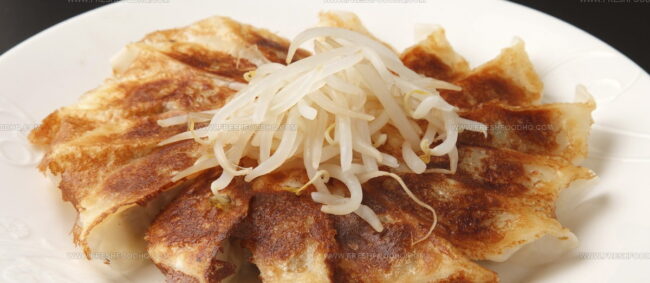

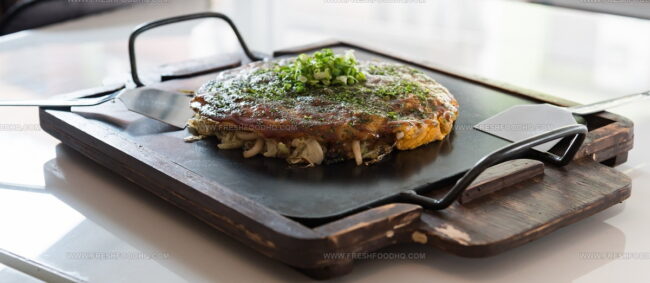

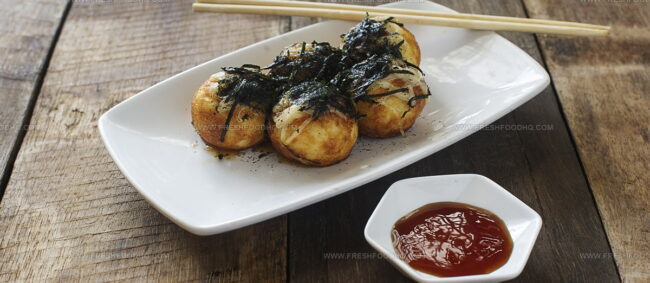
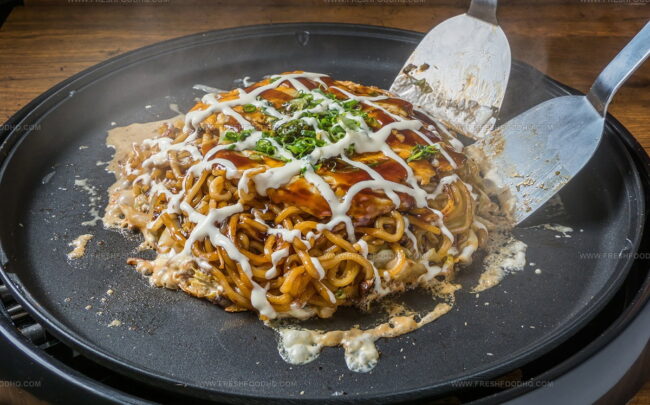

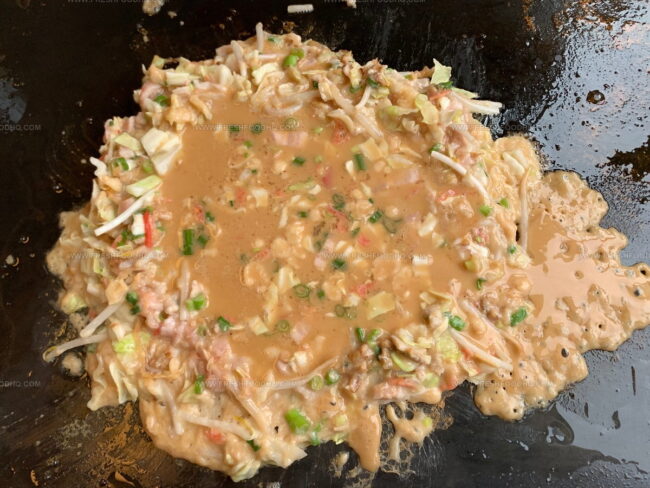
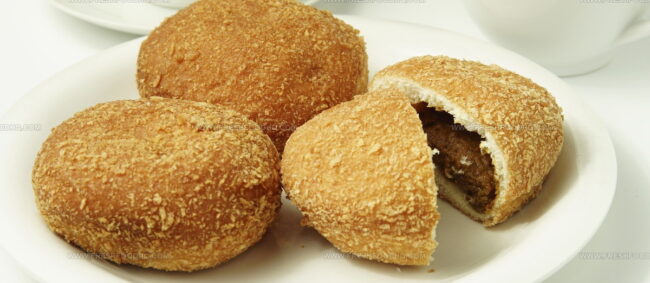

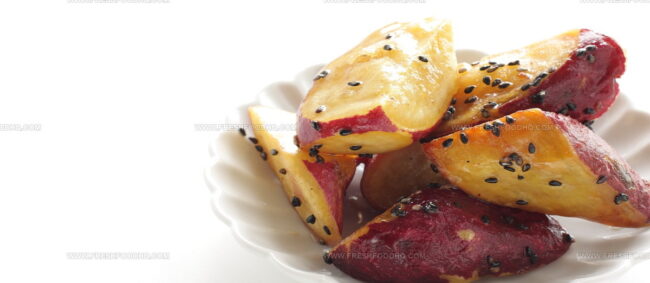
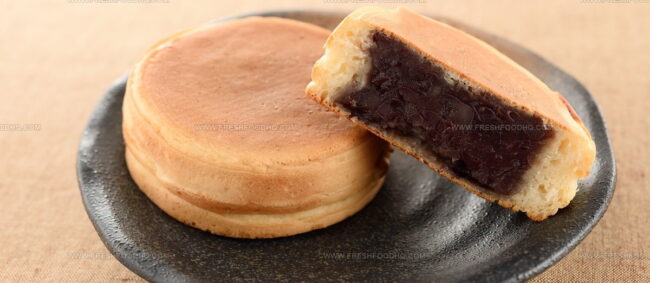



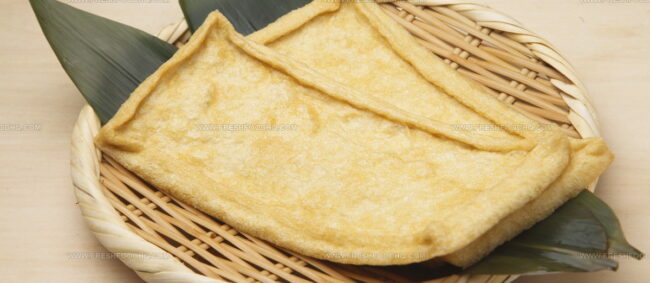


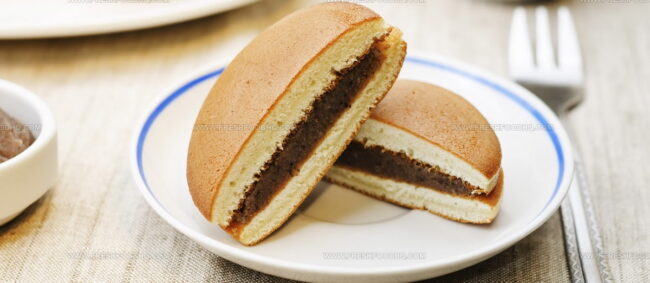
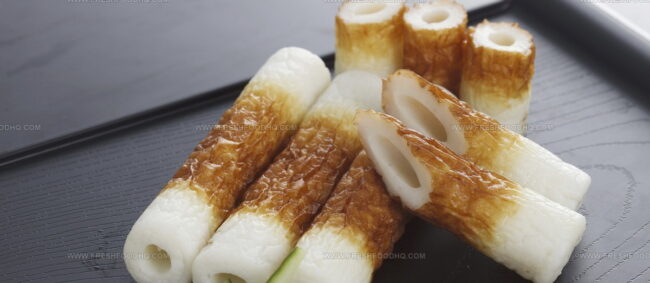

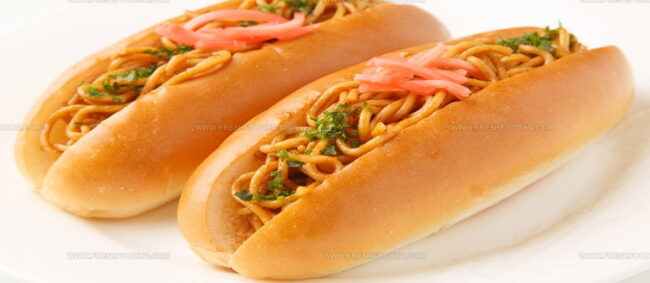
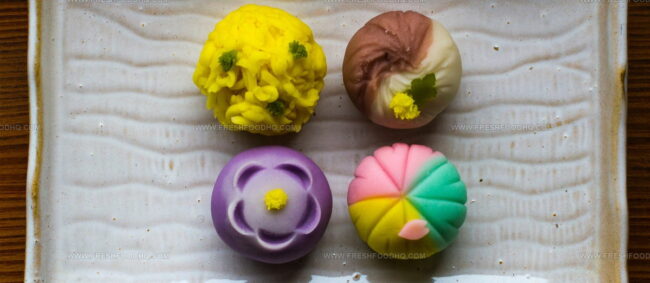
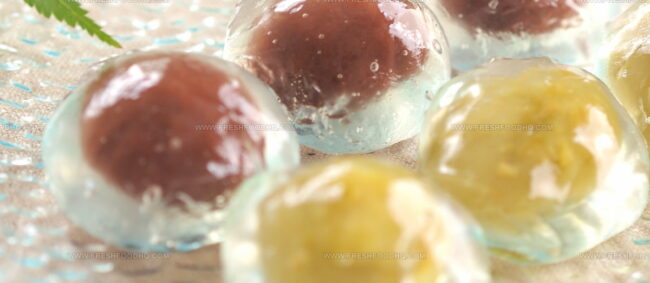

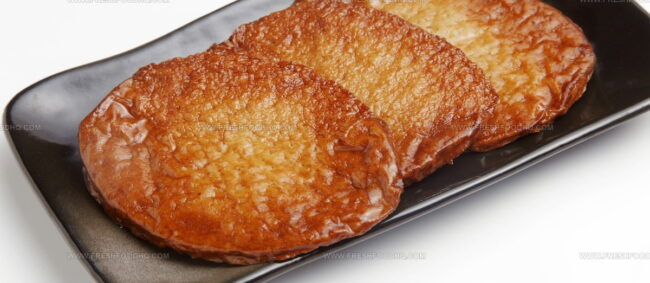
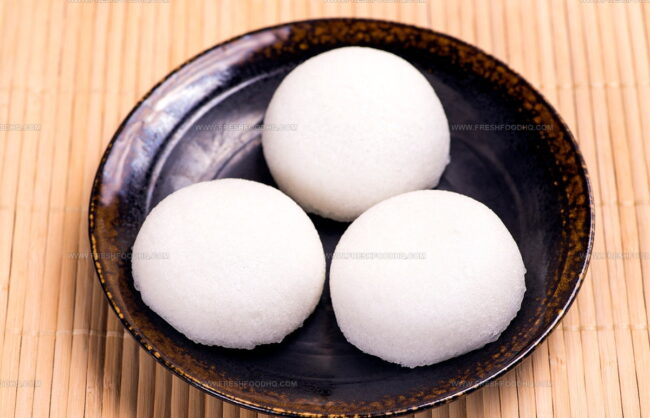

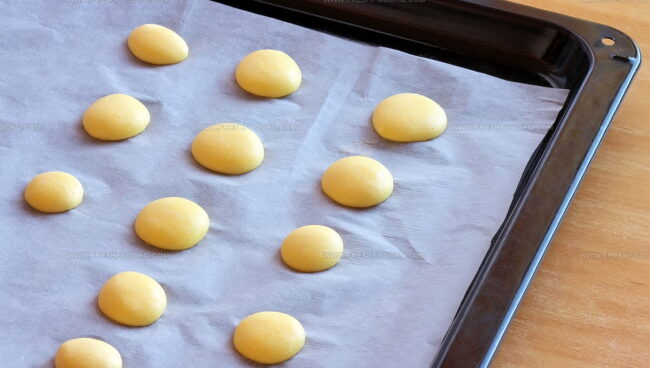
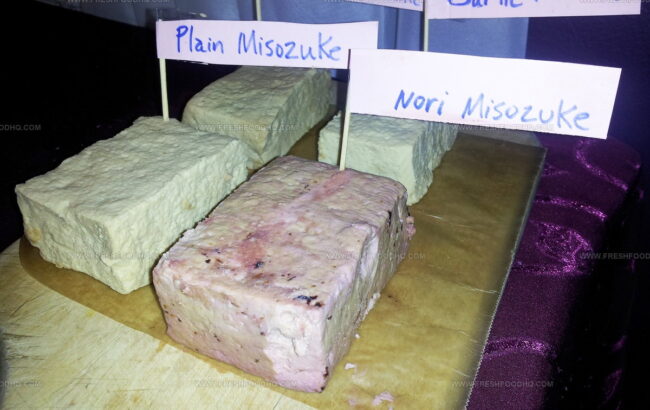

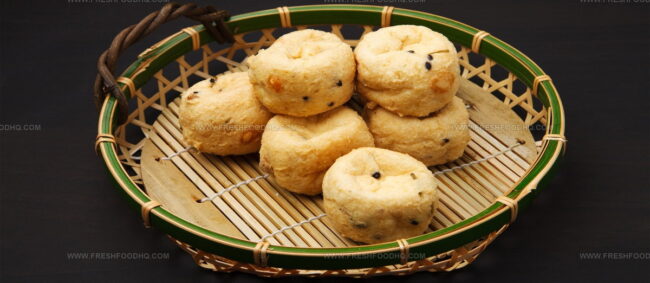


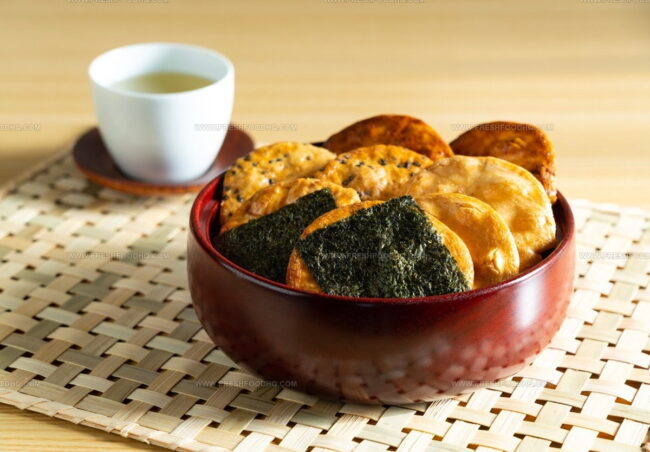
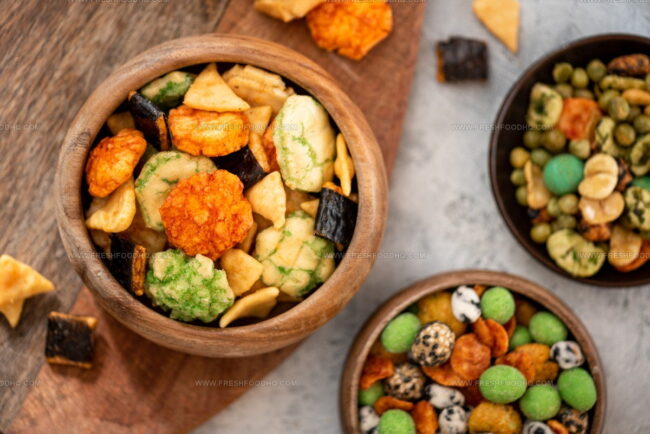
Ethan Caldwell
Founder & Culinary Innovator
Expertise
Farm-to-table cooking, Seasonal recipe creation, Culinary storytelling, Food photography and styling
Education
The Chef’s Academy (Indianapolis, IN)
Ethan didn’t just fall in love with food, he grew into it, surrounded by fields, farmers’ markets, and family meals that told a story.
After sharpening his skills at The Chef’s Academy, he took his passion straight into the farm-to-table movement, working side-by-side with local growers and seasonal flavors.
He believes every recipe should feel like a walk through a summer market: colorful, fresh, and full of possibility.
Outside the kitchen, Ethan’s idea of a perfect day is hiking mountain trails, digging into heirloom vegetables, and hosting casual dinners where seconds are always encouraged.